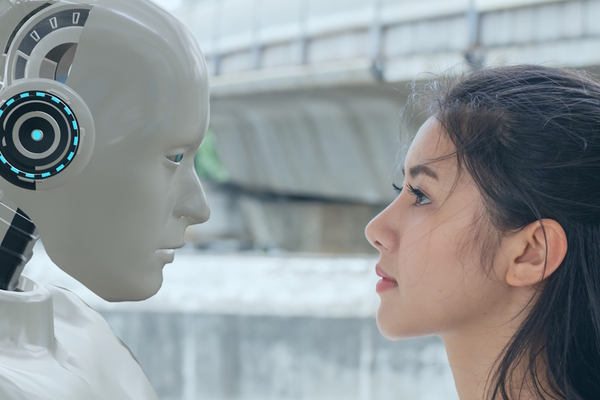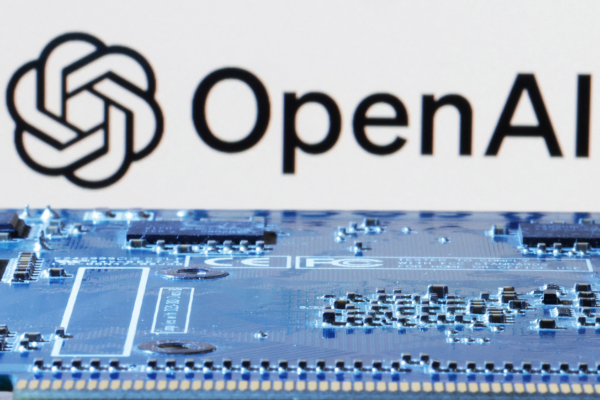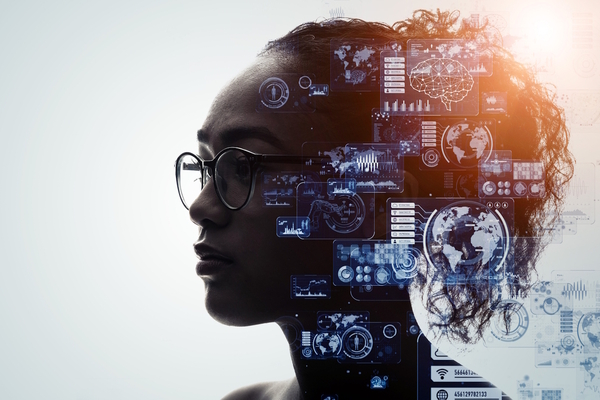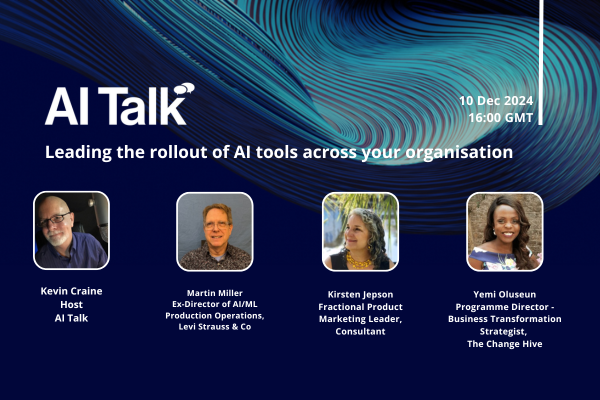Humanised AI: the balance between man and machine

Tiago Cardoso at Hyland explores the importance of humanised AI, what it is, and how it prepares the workforce to embrace game-changing technologies
If you’re wondering why you can’t escape the constant conversation around artificial intelligence (AI) right now, that’s because there’s nowhere you can go – it’s everywhere. From artists to zoologists, and from automated admin to sentient silicon, AI has arrived.
For some, AI is like the Sword of Damocles; hovering over their shoulder, ready to drop at any second and sever them from gainful employment. At some cost-conscious companies, entire copywriting teams have been replaced by machines, while AI has contributed to the fearmongering elsewhere, when over 10,000 were laid off in 2023 in the video games industry.
The headlines are telling us that the machines are here, and they’re here for our jobs – about 8 million of them, according to the Institute for Public Policy Research. But if we look at what’s come before, and what AI is capable of, the headlines don’t tell the whole story.
Man and machine
For starters, it’s not the first time that technological advancement has supposedly threatened our livelihoods. British economist John Maynard Keynes said that “the increase of technical efficiency has been taking place faster than we can deal with the problem of labour absorption” almost 100 years ago; 100 years before that, the Luddites were marching on the textile mills that dared to replace them with machinery that did the work of three men.
So, if we’re not about to see human labour becomes defunct – where are we?
The truth is that AI will inevitably replace some roles, particularly those revolving around admin. But it doesn’t have the agency or sophistication to replace the vast majority of jobs; and it’s not a meaningful substitute for genuine human input. AI is bereft of the intentionality that comes with genuine agency and intelligence.
What we’re faced with, rather, is a technology capable of doing incredible things when it comes to crunching data – but that is almost entirely contained by the people and systems that use it, and the pattern recognition required to imitate thought. It can capture, store and protect a document far more efficiently than any human, but simply cannot think for itself.
In most cases, this means that man and machine work best in tandem. We can think of this as ‘humanised AI’ – AI not as a replacement for the workforce, but an augment.
Humans being
Any attempt at humanised AI needs to reflect the needs, wants, and nuances of that organisation. Establishing this is neither quick, nor easy.
The human element is the most important starting point. Presenting AI as a solution to existing problems, rather than an omnipotent system that steamrollers the workforce, is much more likely to result in an honest assessment of the challenges that AI needs to address. To understand the toughest obstacles that a business faces day-to-day, you need buy-in from the people that have the answers.
It’s also important to establish just how technologically ‘mature’ your business is. It’s entirely possible, especially in these heady early days as AI pioneers, to read a headline and assume that you can benefit in the same way right out of the box. The plucky startup is likely to lack the basic tech required to adopt the most sophisticated uses of AI.
Similarly, well-established corporate giants will likely have to wrestle with some serious hardware upgrades to access any meaningful benefits. Banking is one prominent example, where many established players are wedded to cumbersome and expensive legacy systems that simply weren’t designed with modern parameters in mind.
If you can establish these basic pillars – the problems that AI needs to address for your staff, the technological prowess of your business, and the obstacles to implementing the New Order – you’re in position to begin establishing humanised AI as a pillar of your organisation.
But don’t mistake this for a static process. Keeping up with AI is a journey, not a task.
Rules and regulations
Whether it’s something as familiar as a document management system or as sophisticated as Generative AI, the use, maintenance, and development of any Artificial Intelligence tool or programme within your business is an ongoing process. It requires a constant investment of time, energy, and attention.
For one, regulation is constantly evolving. Even at the global level, there are differing ideas across the major AI powers – the US, China, the EU – as to the balance of innovation and safety. Meta has just announced that its AI model, Llama, won’t be made available to EU users as regional regulation is too stringent.
The same goes for the technologies your business has chosen, regardless of what they are. The sheer speed at which AI is evolving year-on-year is enough to blister the skin – and regulation must keep up with that pace. So, when it comes to humanised AI – the best of both worlds – both the technology and the human element must be developed simultaneously, too.
Upskilling is therefore important here. Confluent’s 2024 Data Streaming Report suggests that, when it comes to adopting AI, “insufficient skills and expertise in managing AI projects and workflows” are a challenge for 65% of businesses. This is a problem both in terms of usability and regulation; how are you supposed to harness AI when you can’t access its basic functions, or don’t know the rules of its use?
Staff have been told that humanised AI will solve the problems they’ve so honestly raised. But if your company is not educating you on how and why that AI can be used, humanised AI isn’t a realistic prospect. As we watch regulation develop alongside technology, the onus is on the employer to enable the employee to both understand and harness AI.
Ghost in the machine
In many ways, then, humanised AI is similar to the old trope of the ‘ghost in the machine’; an incredibly impressive machine that remains vacant until we give it meaning.
It’s impossible to argue with how impressive the sheer scale of the technology is. AI can transform content-centric processes, accelerate data-driven decision-making, and underpin a much stronger customer and employee experience – all in the blink of an eye, without the risk of human error.
But these accomplishments depend on human inference. Bad actors might be inclined to rip out entire teams and replace them with machines – but they are making a compromise on the quality of their output and will inevitably have a human somewhere in control of that output.
Humanised AI is the balance that we find between these two forces. Being able to channel the indefatigable work rate and incredible speed of AI with the natural strengths of our workforce, we can achieve something greater than the whole.
Tiago Cardoso is Group Product Manager at Hyland
Main image courtesy of iStockPhoto.com and Devrimb

Business Reporter Team
Most Viewed
Winston House, 3rd Floor, Units 306-309, 2-4 Dollis Park, London, N3 1HF
23-29 Hendon Lane, London, N3 1RT
020 8349 4363
© 2024, Lyonsdown Limited. Business Reporter® is a registered trademark of Lyonsdown Ltd. VAT registration number: 830519543





